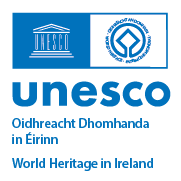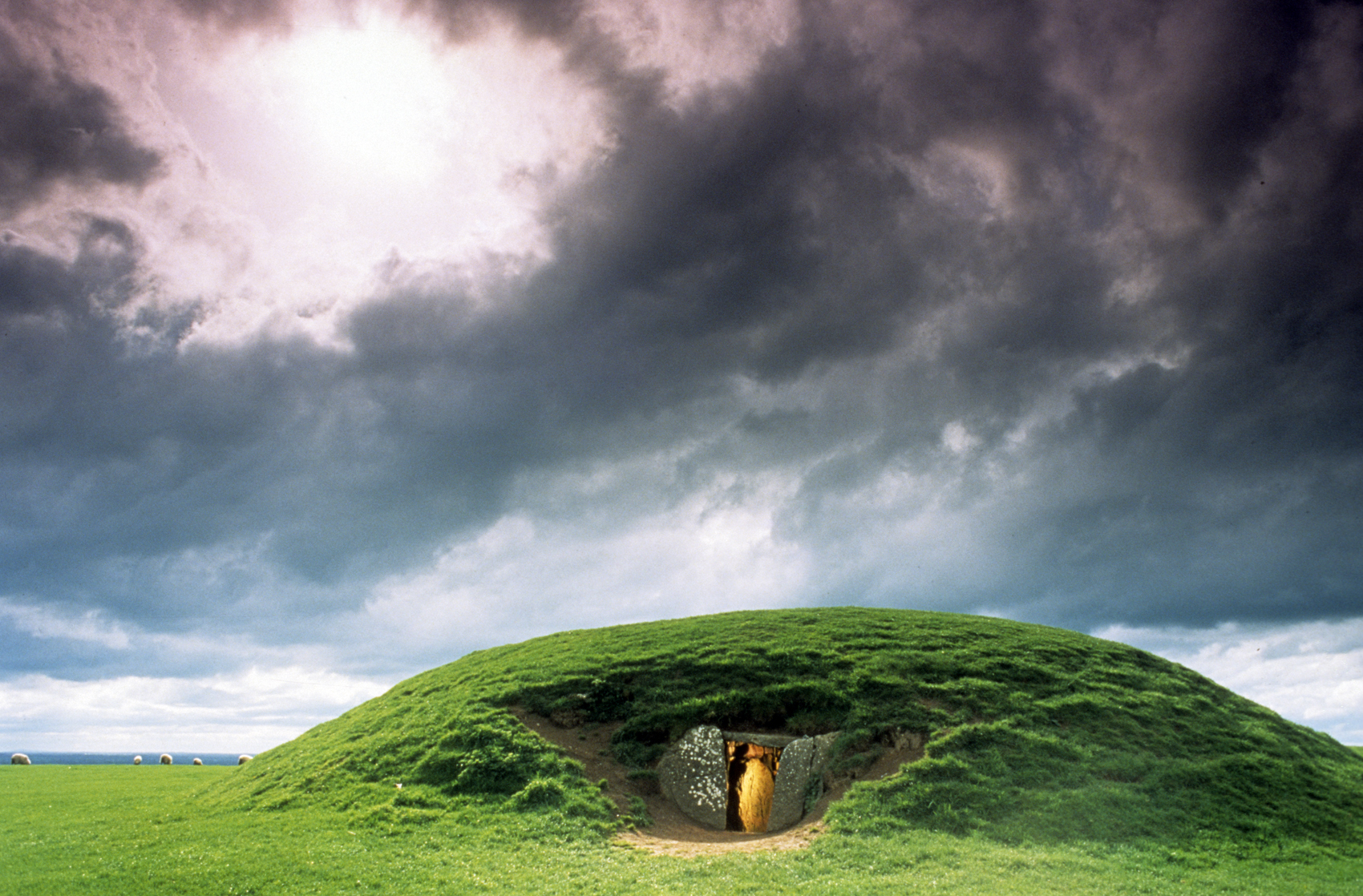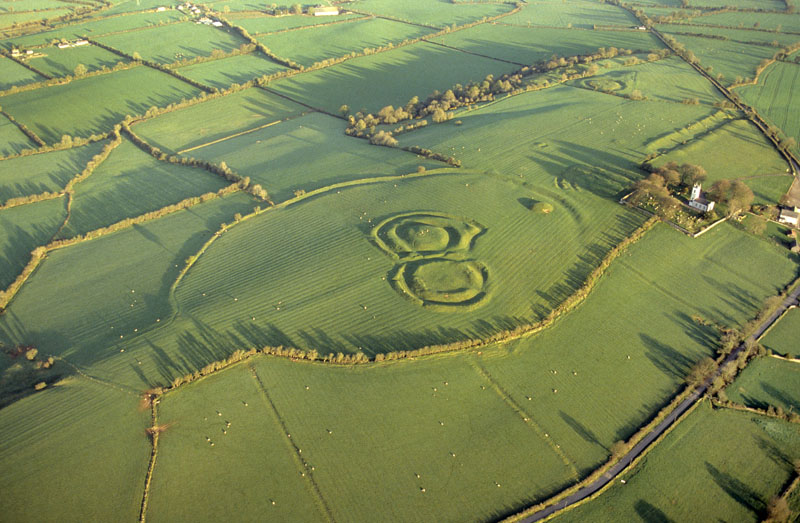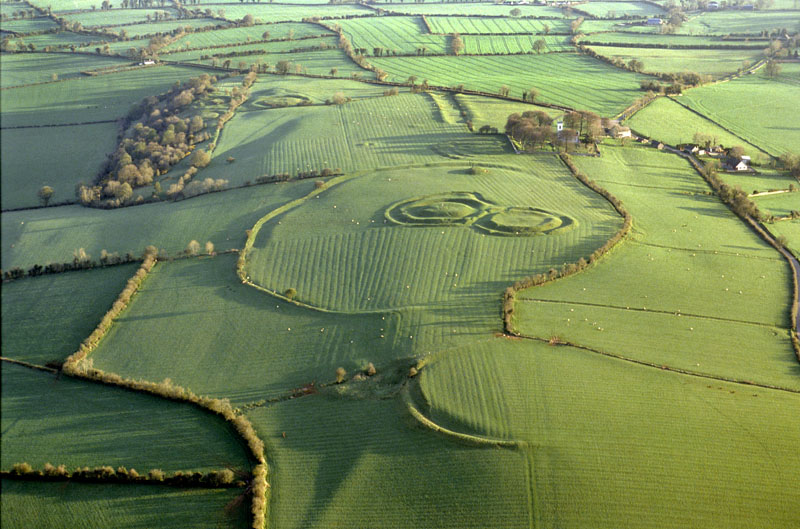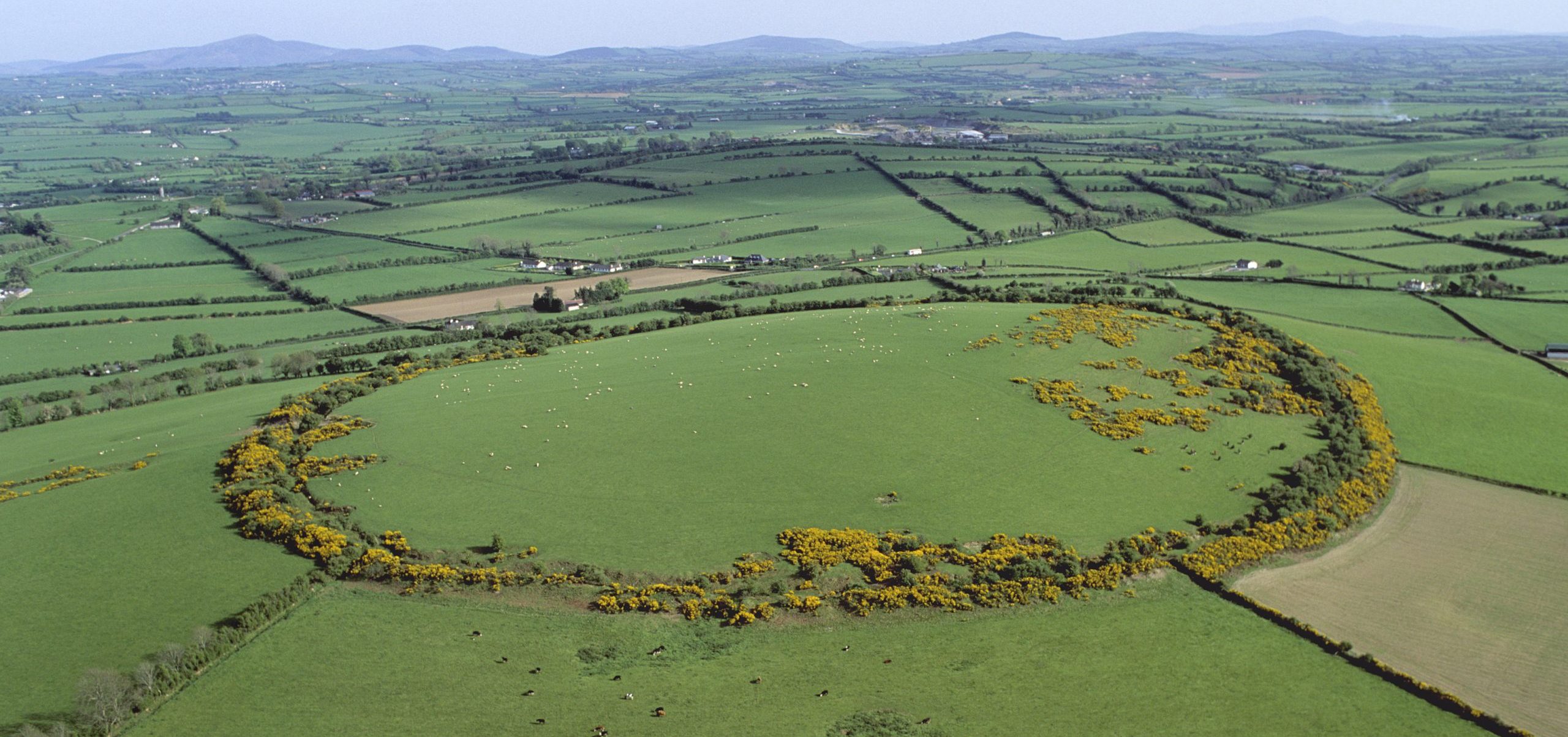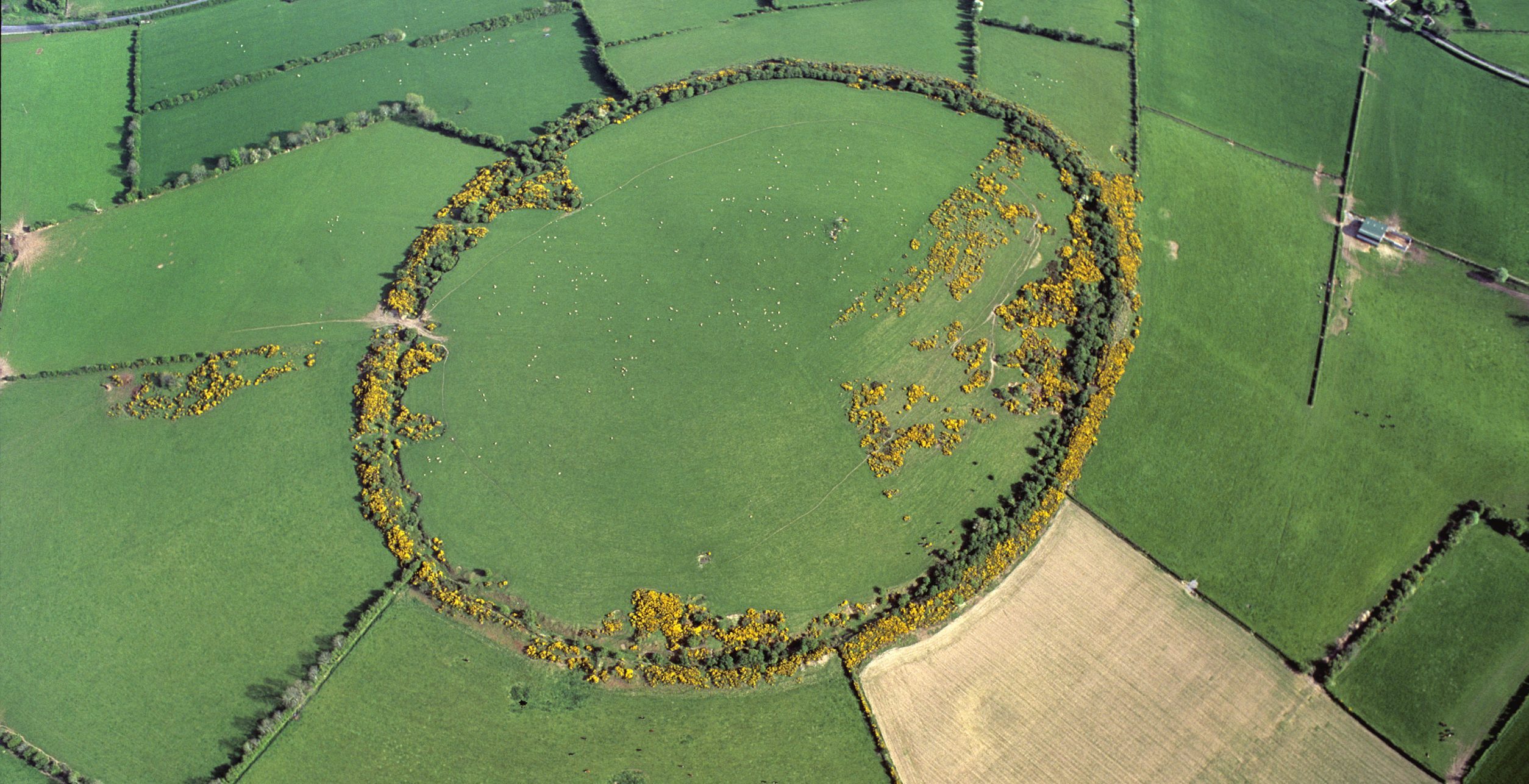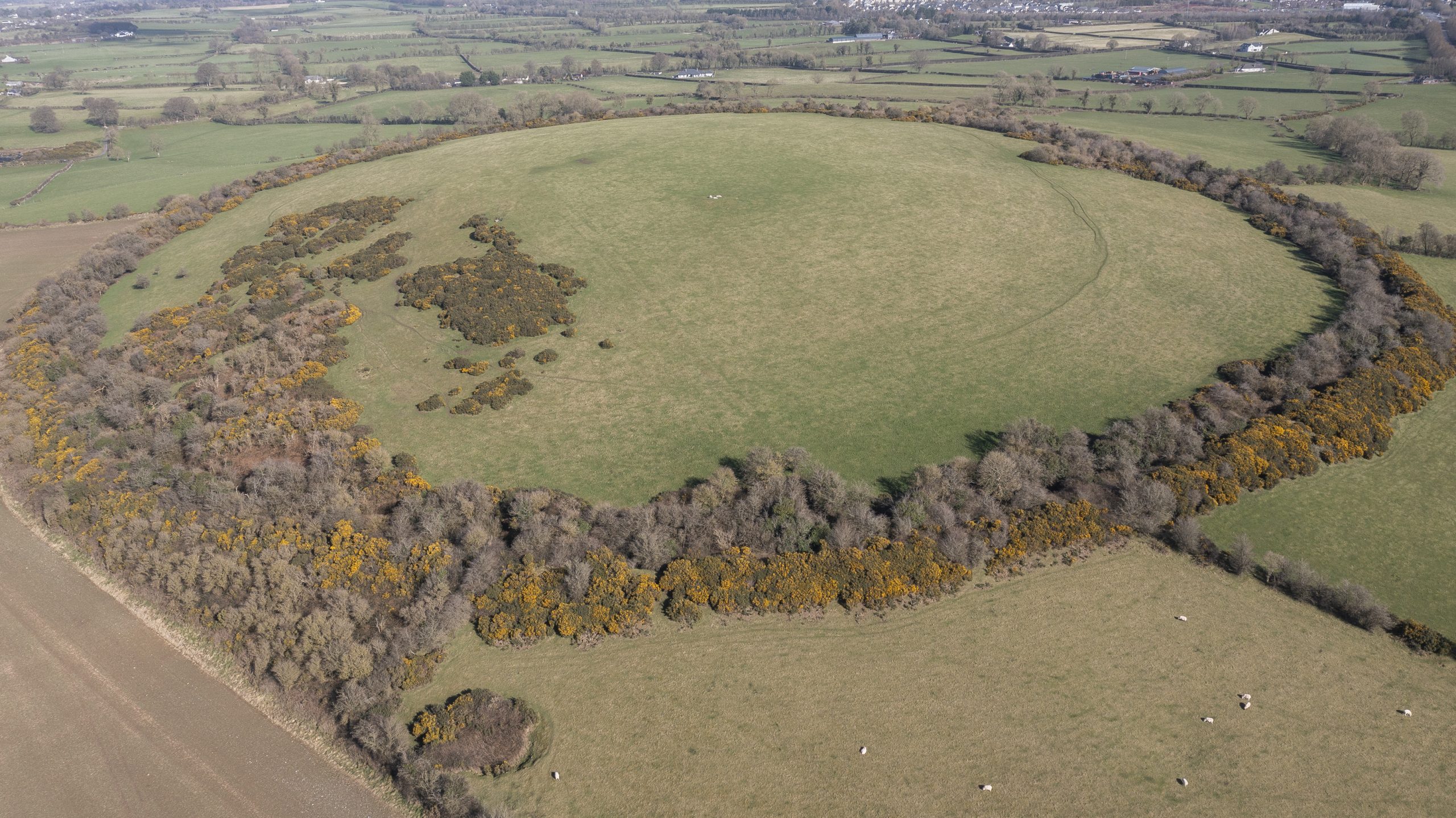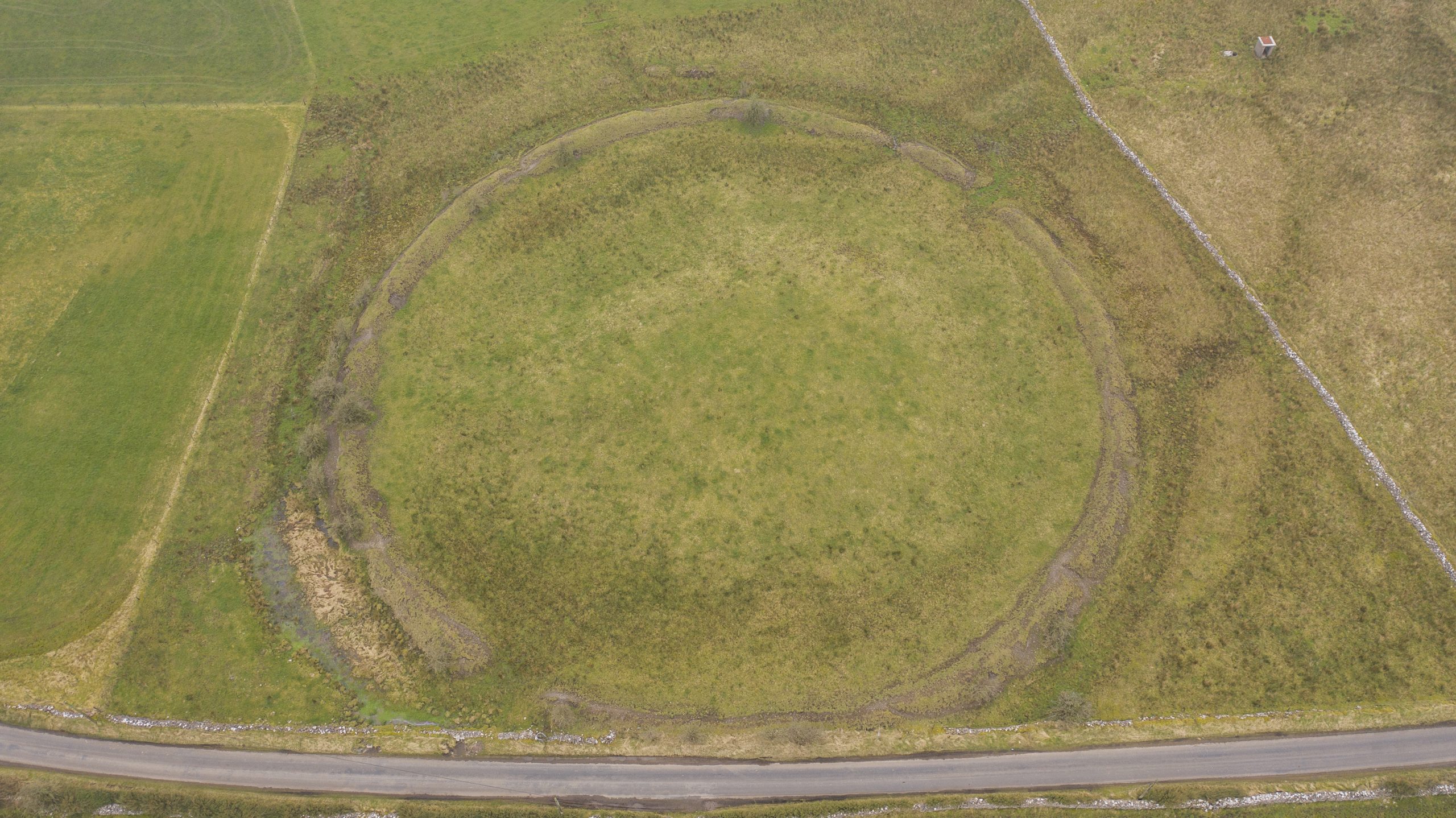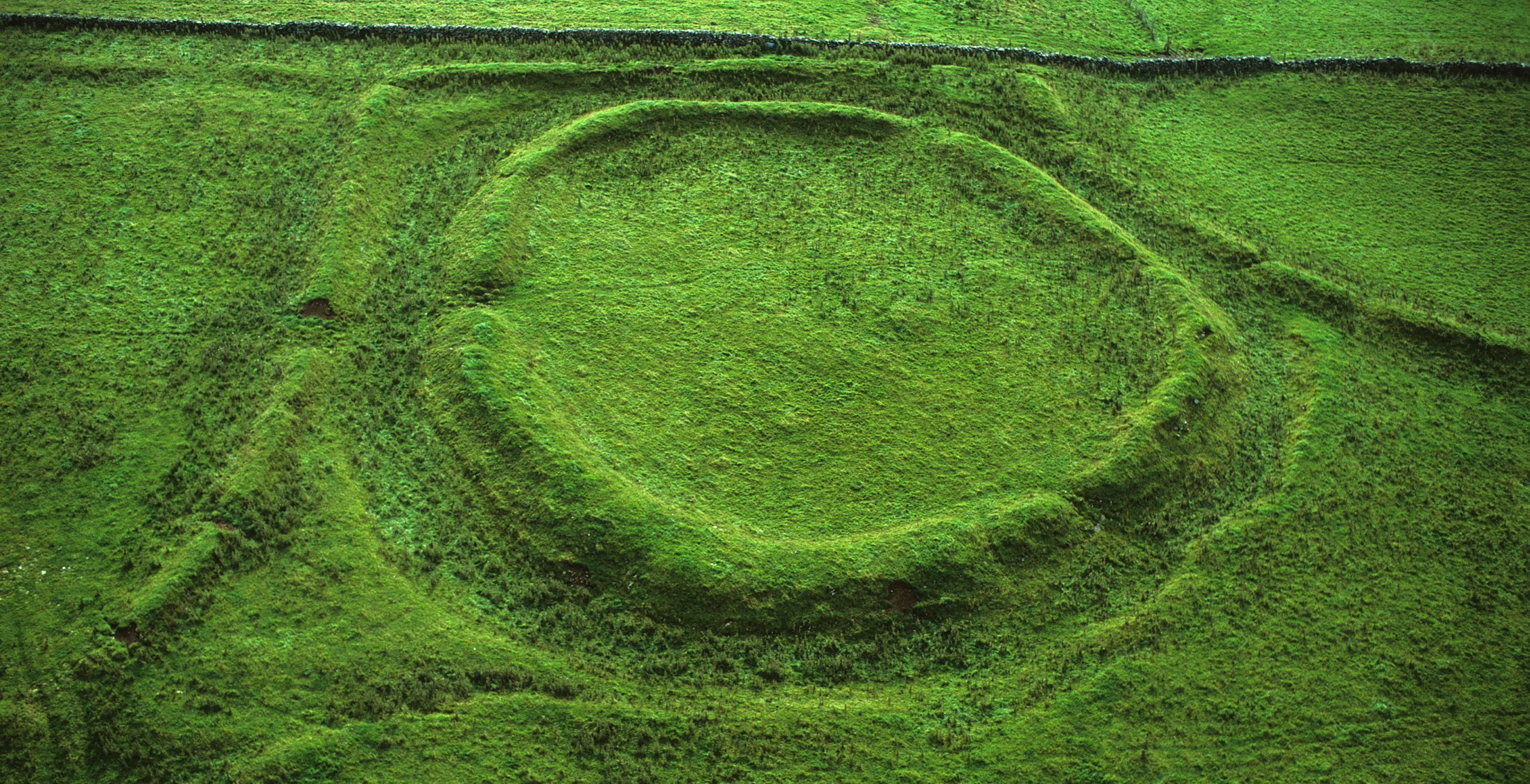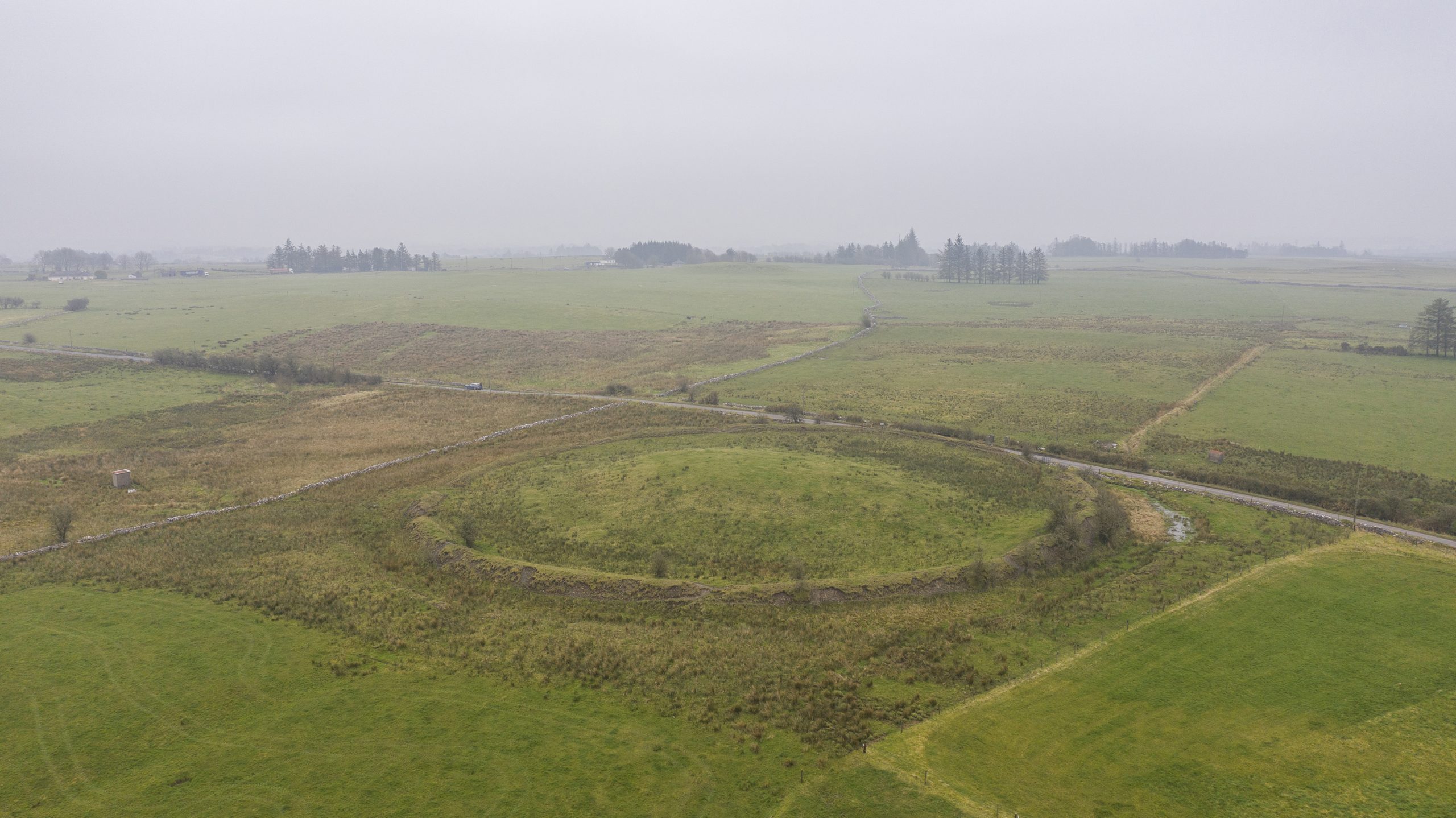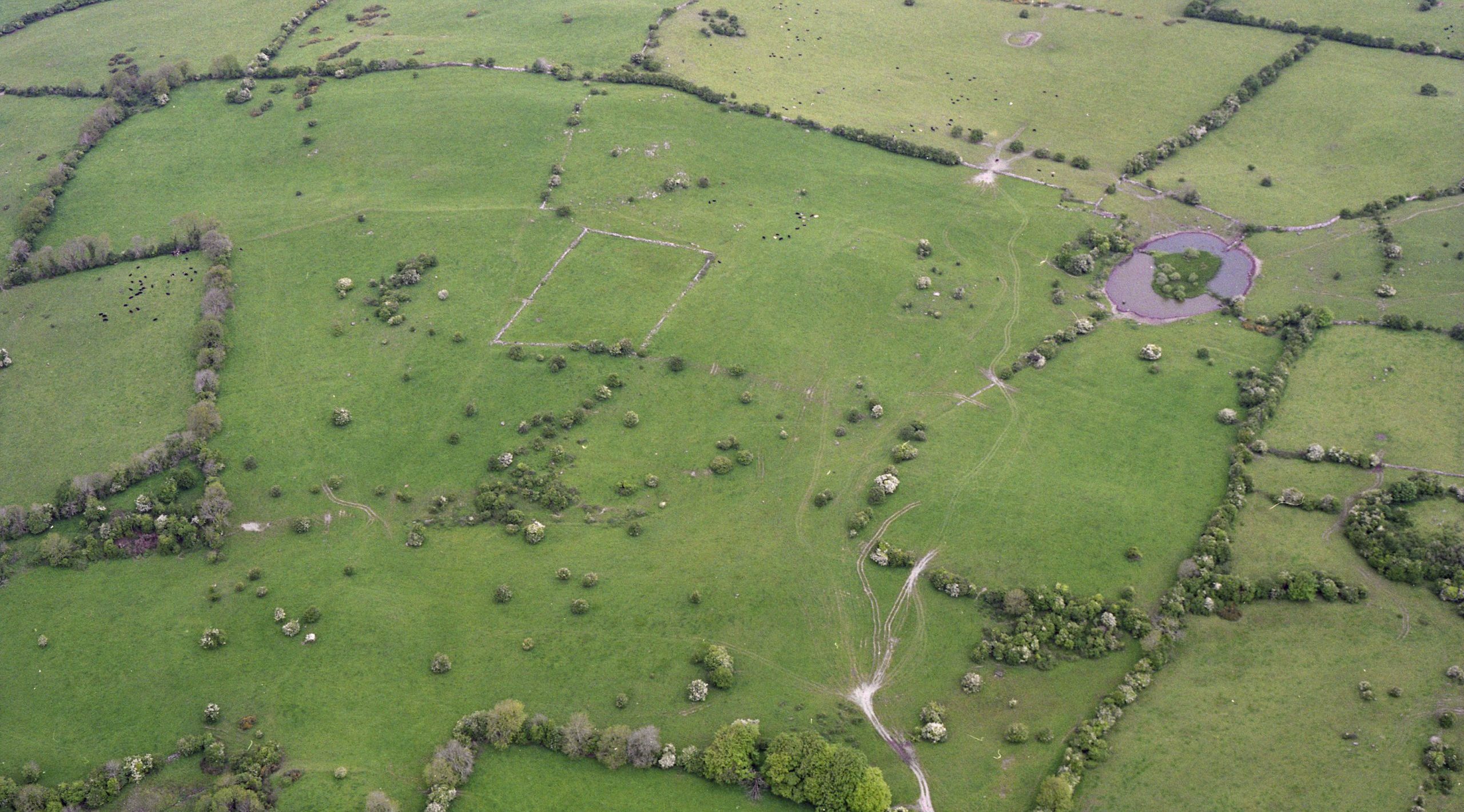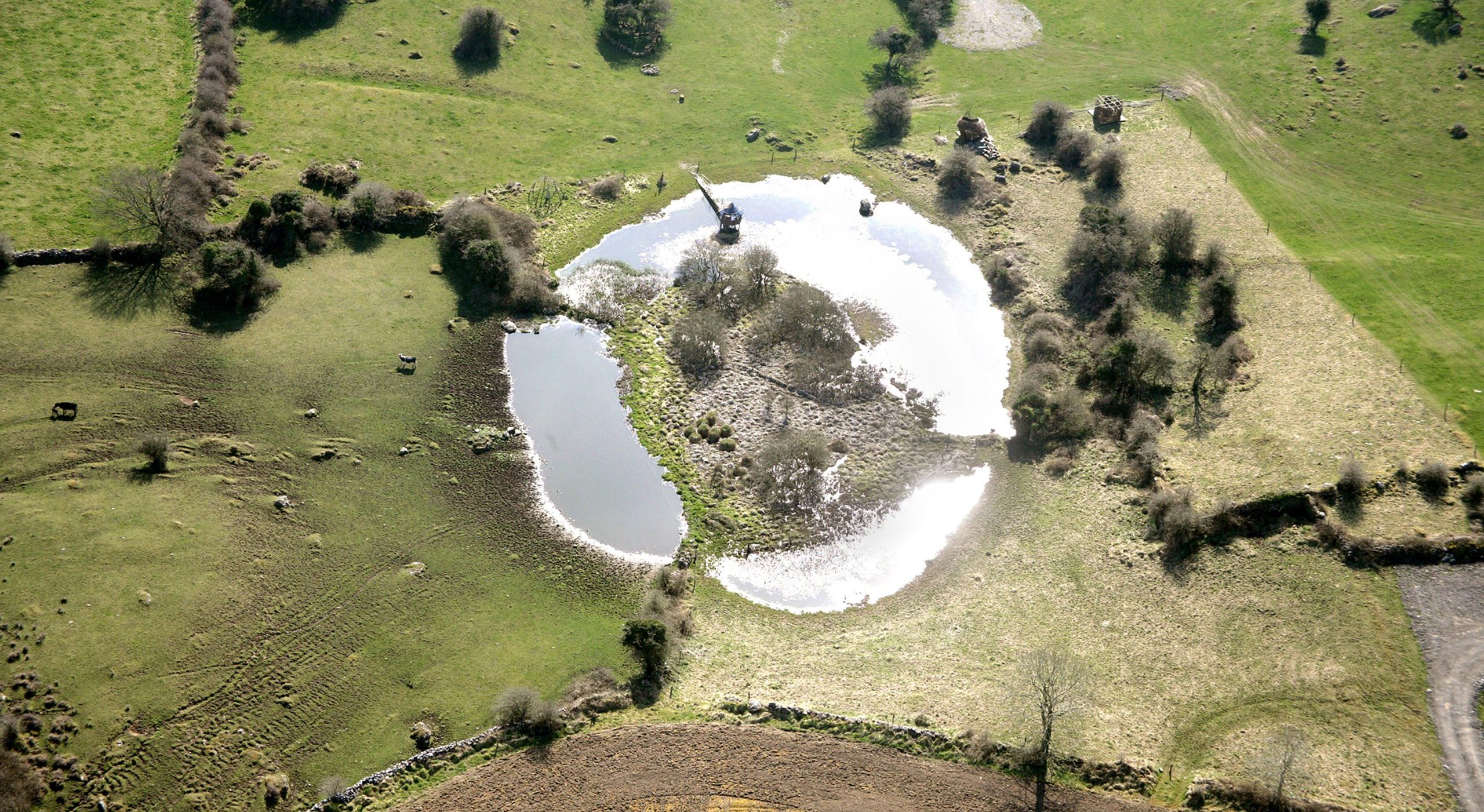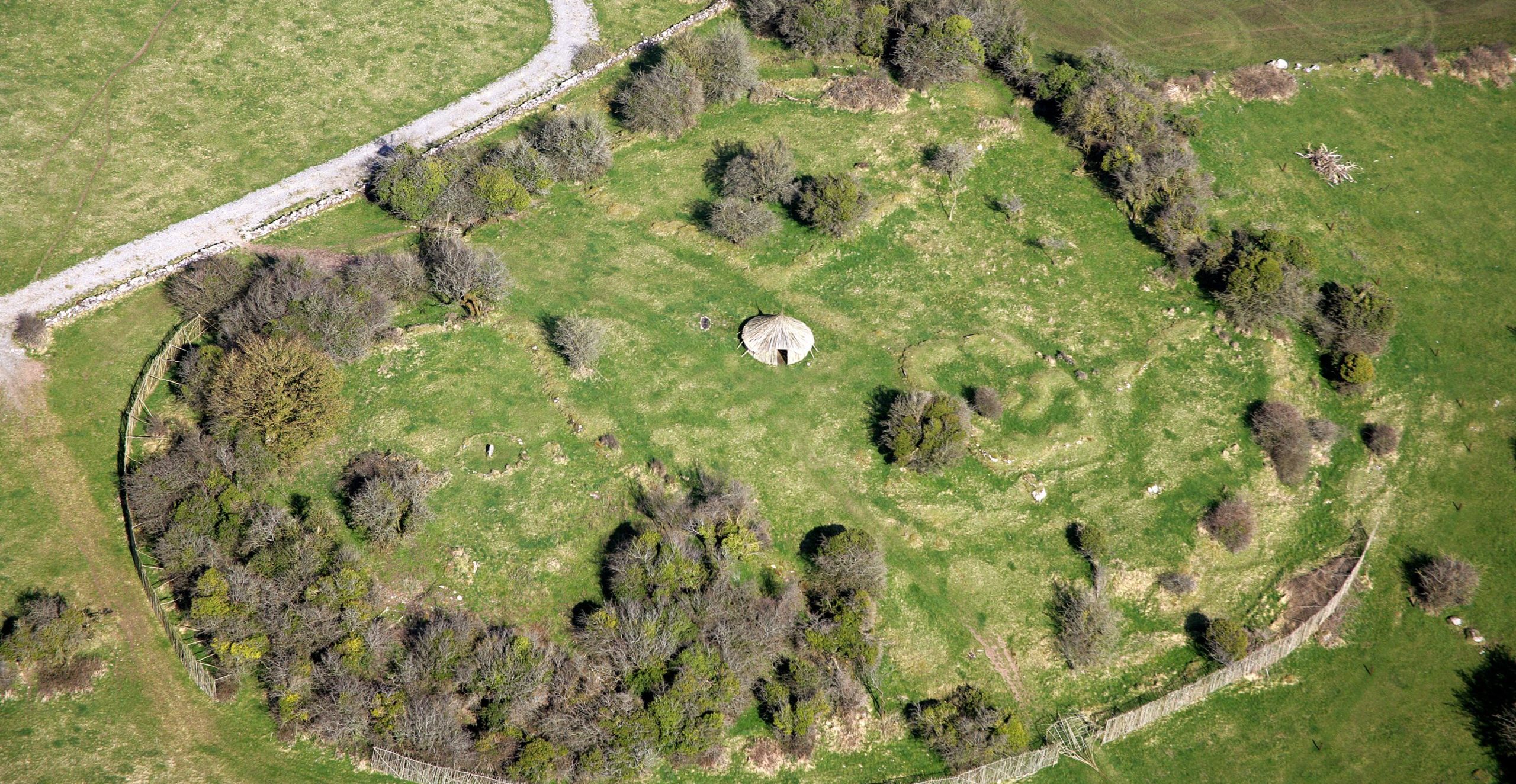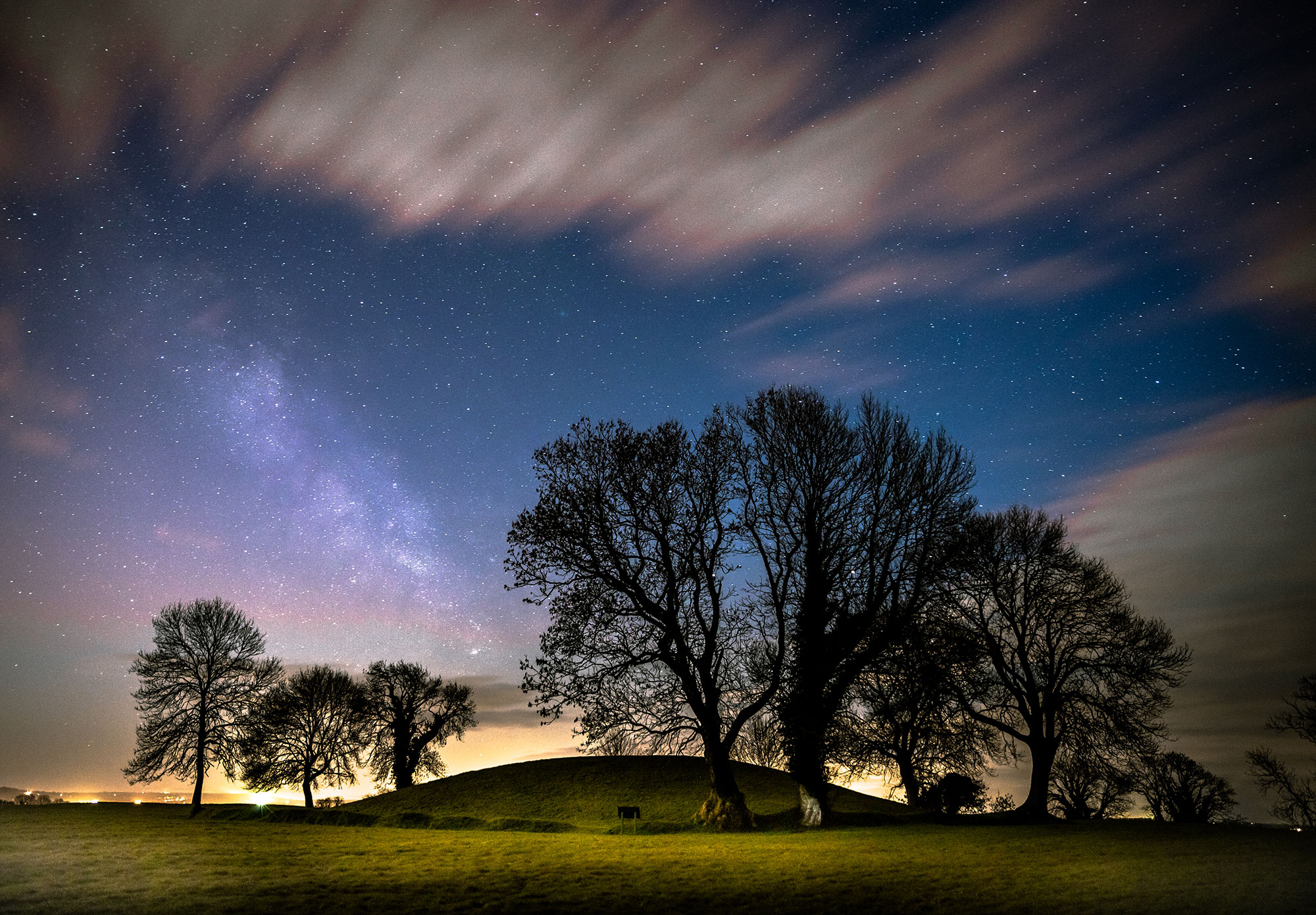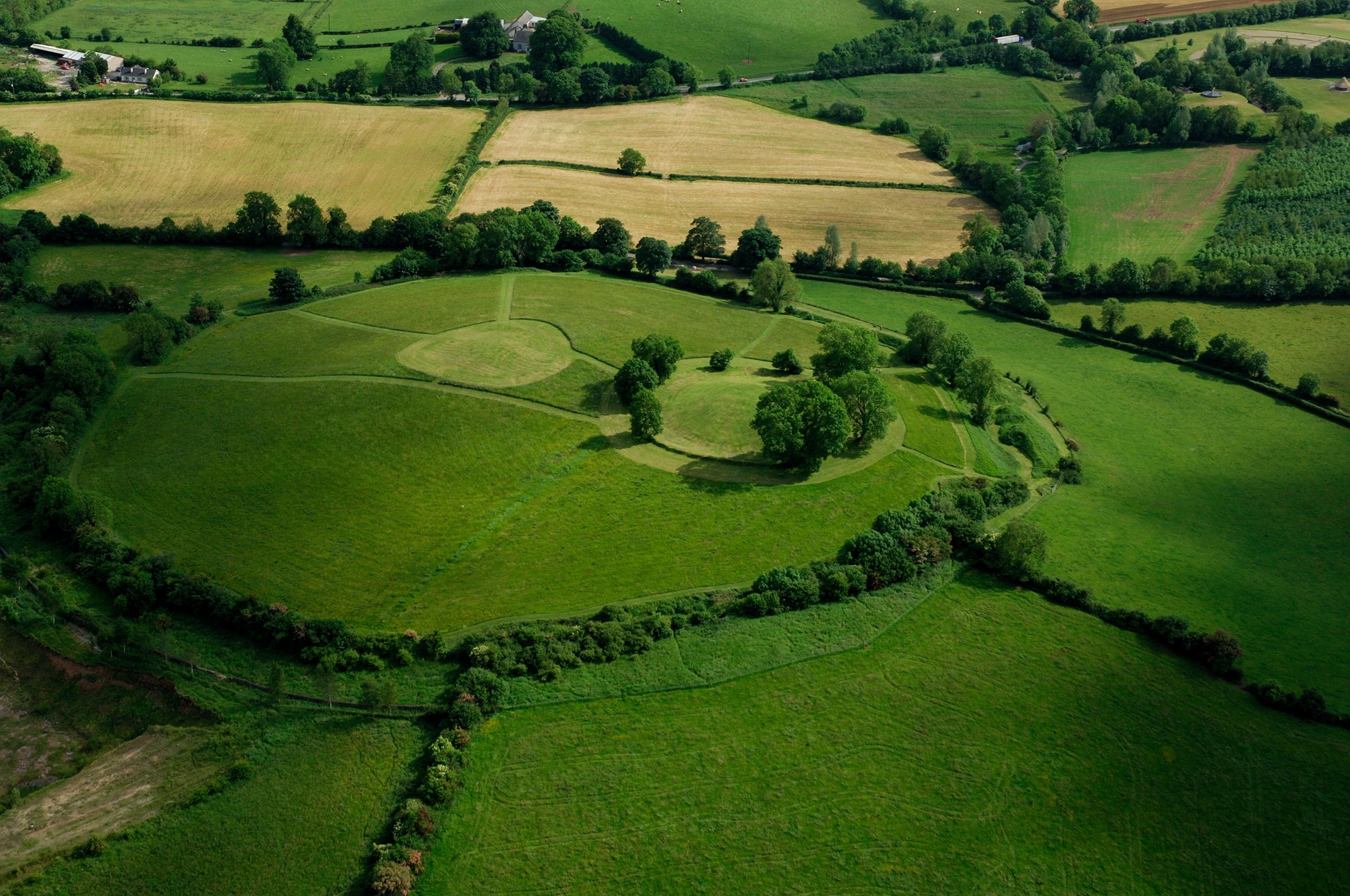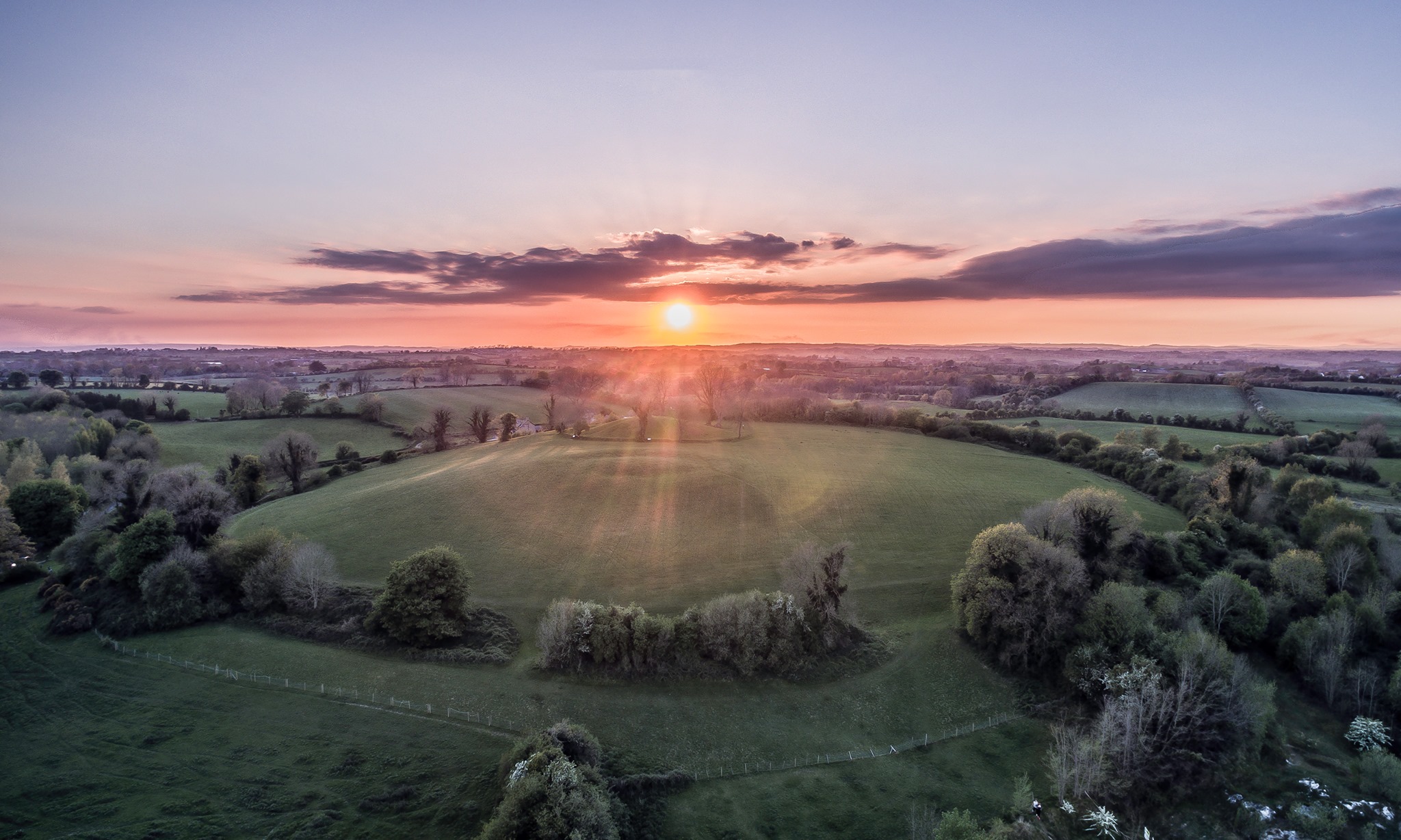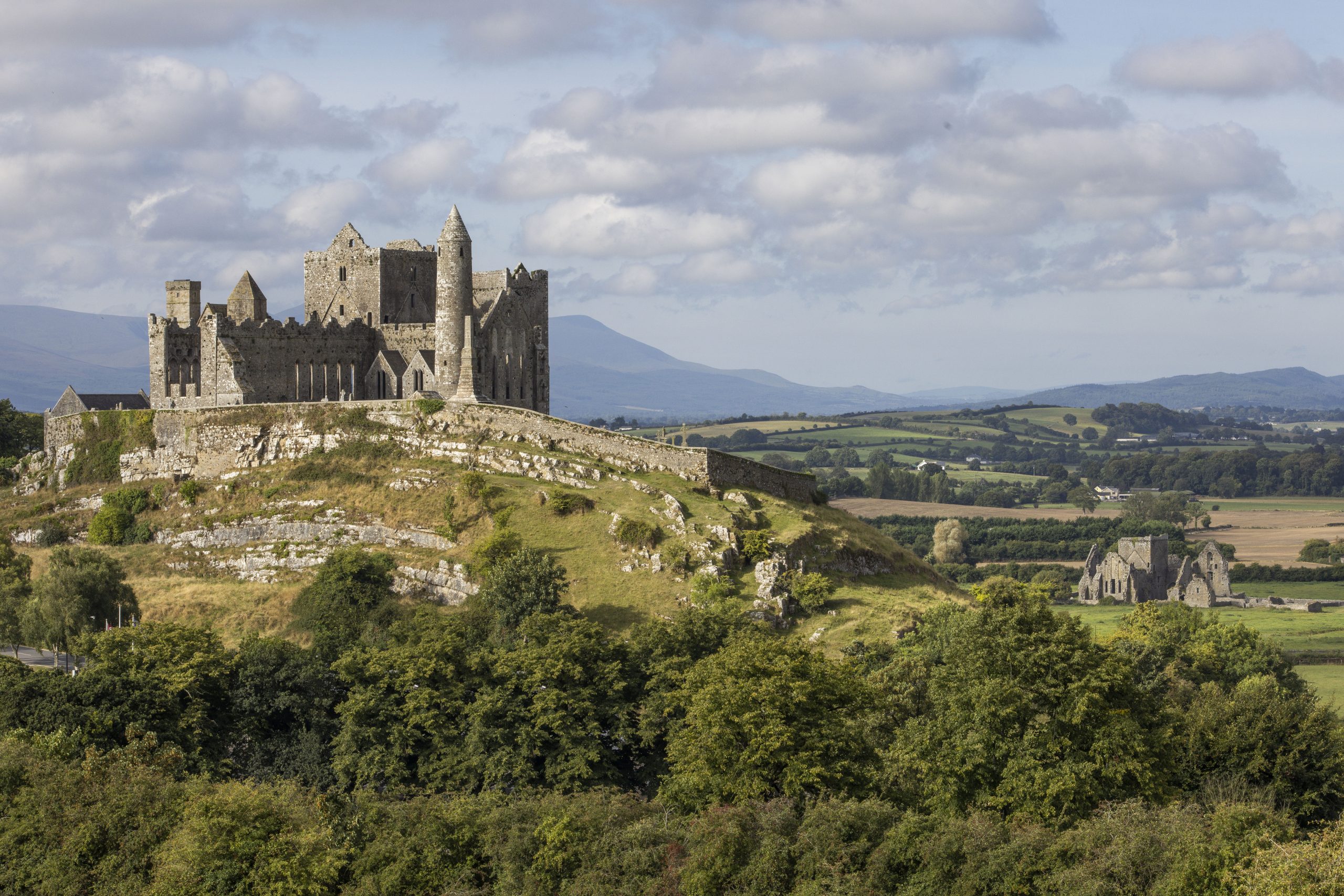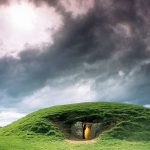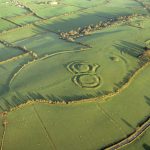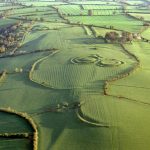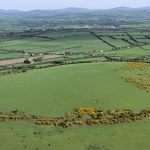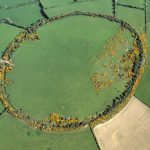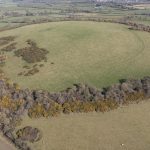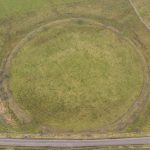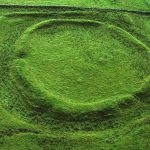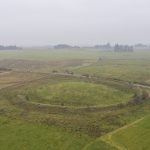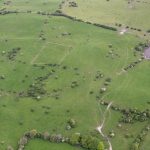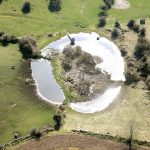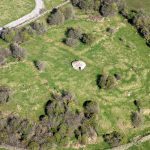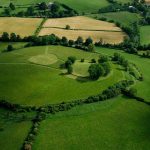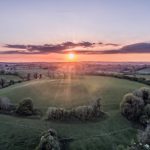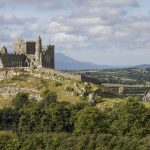About
From the eighth century BC, Emain Macha/Navan Fort, Dún Ailinne*, the Rock of Cashel, and Rathcroghan, have been the traditional royal centres of the North, East, South, and West provinces, together with Tara, the seat of the High Kings, and the Hill of Uisneach, the symbolic central point of Ireland, forming a globally unique group of archaeological ceremonial complexes. They demonstrate in physical form the development of power, ceremony and religion in a Celtic society minimally influenced by the Romans.
Surviving archaeology and excavated evidence of buildings and other structures show that the sites were used extensively for ceremonial, religious and funerary purposes. At some of them, such activity started in the Neolithic and all, except Cashel, were very active in the Iron Age, with massive ceremonial complexes. All were sited on the top of hills or plateaux so that they could be seen from far away and had panoramic views of the surrounding areas. All are part of larger cultural landscapes which were focused on them. The character of the structures linked to their ceremonial function changed over time until their abandonment following the spread of Christianity.
*Dún Ailinne is part of a working farm on private land and not accessible to the public.
Gallery
Map
- Emain Macha, Killylea Road, Armagh, UK, 81, Killylea Road, Armagh, Northern Ireland, BT60 4LD, United Kingdom.
- Dún Ailinne, Whitehall, County Kildare, Ireland, County Kildare, Ireland.
- Rock of Cashel, Moor, Cashel, County Tipperary, Ireland, Cashel, County Tipperary, Ireland.
- Rath Cruachan, Rathcave, Roscommon, Ireland, County Roscommon, Ireland.
- Hill of Uisneach, Rathnew, Loughnavalley, County Westmeath, Ireland, Loughnavalley, County Westmeath, N91 R6C9, Ireland.
- Hill of Tara, Castleboy, County Meath, Ireland, County Meath, Ireland.
Potential Outstanding Universal Value
Justification
The ensembles of monuments of the Royal Sites are universally unique through their well-preserved cultural continuity and large-scale Iron Age complexes. The Royal Sites were sacred sites and places of royal inauguration and bear exceptional testimony to Iron Age civilisation forming a globally unique group of archaeological ceremonial complexes.
All of the Royal Sites form part of larger archaeological landscapes characterised by a large concentration of ritual monuments demonstrating in physical form the development of power, ceremony and religion in a Celtic society. Situated on strategic and elevated locations, the Royal sites are directly associated with Irish mythology and traditional beliefs and continue to represent spiritual and symbolic centres of Irish culture and identity, which have influenced approaches to life in many countries of the world.
Criterion (iii): The Royal Sites of Ireland are an outstanding example of a group of places demonstrating a social system based on kingship and assembly with strong ritual and ceremonial aspects. By the early medieval period, these places were recognised in myth, legend and the earliest historical writings as the most important places in Irish kingship. These writings describe a cultural tradition of kingship, assembly and ritual which is manifested in the archaeological remains at the six sites. The combination of documentary and archaeological evidence is truly exceptional testimony to the culture of Ireland in the early medieval period. Taken together, the sites provide an unparalleled record of the central places of ritual, ceremony, and the display and exercise of power in the Iron Age and Early Medieval period. These complexes of monuments, with shared key elements and features, point to a common set of belief systems at various stages in history. These beliefs related to the sacred nature and power of kingship and the power of ancestors. The combined material and literary evidence feeds into a wider canon of testimony worldwide of belief systems linked to the creation of sacral cultural landscapes and focal places of assembly. The size of the enclosure monuments suggests a public function in which the ‘theatre’ of kingship, power, inauguration and associated ceremonies took places.
Criterion (iv): As a group, the Royal Sites illustrate the development of monumental ceremonial and funerary architecture in the Iron Age and Early Medieval period. All six sites demonstrate a continuing wish to locate such places prominently on hill-tops so that they are visual foci for large landscapes. Five of the sites have well preserved archaeological evidence going back for up to several thousand years. Apart from the prominent visible monuments, excavation and non-intrusive investigations have shown extraordinary concentrations of major ceremonial, ritual and funerary structures, including Neolithic enclosures and passage graves, with Neolithic, Bronze Age and Iron Age burials in ring-barrows or ring-ditches. From the Iron Age there are massive circular enclosures with internal ditches, figure-of-eight shaped enclosures, large timber structures including concentric circular complexes, and ceremonial approaches. The Rock of Cashel shows how the ritual and ceremonial aspects were adapted to the needs of Christianity and Christian kings and there is evidence at Tara and Uisneach for later Christian associations. At Navan Fort the Christian successor is at Armagh on the next prominent hill.
Criterion (vi): The Royal Sites are directly and tangibly associated with ancient Irish myths, legends and traditions that reflect ancient Indo-European roots and universal belief systems, many of which are specifically related to these places. Because of these associations, the sites retain a special identity in modern Ireland. The great early Irish sagas of the Táin Bó Cúailgne and the Táin Bó Fraích are set at Rathcroghan and the great Ulster Cycle at Eamhain Macha, and there is mention of Uisneach, while the stories of St. Patrick’s visits to Tara and other royal sites are chronicled in the Tírechán from 700 A.D. Navan Fort also retained a special status well into the medieval period, with Niall Og O’Neill building a house for the poets of Ireland within the enclosure in 1387. These legends and the places themselves have helped to maintain Irish identity through the centuries. Tara held a central place in the ‘idea’ of early modern Ireland and it retained its special identity to the extent that it was used as a meeting place during later political developments, for example in the rising of 1798 and Daniel O’Connell’s “monster meeting” in 1843 (he also held one at Uisneach). The Royal Sites are an outstanding example of the use of specific places to encapsulate a sense of shared identity.
Authenticity
The Sites all retain their prominent hill-top positions with panoramic views across their surrounding cultural landscapes. All the sites are characterised by surviving prehistoric and early medieval earthworks and masonry monuments. Their overall authenticity is high.
Archaeological investigation over the last 50 years, including both excavation and extensive non-intrusive surveys (aerial, field, geophysical, LiDAR), has provided unequivocal evidence for the entirely authentic and unique nature of the sites, and continues to do so. Medieval historical texts testify to the essential collective identity of the sites and their lexicon of mythical and legendary attribution.
The only instances where post-excavation reconstruction of earthwork features has been undertaken is at Navan Fort (Site B) (where part of the mound was unexcavated, allowing an accurate recreation of its dimensions and profile) and Tara (Dúma na nGaill). Elsewhere, excavations have been backfilled when completed. Cashel’s round tower was restored in 1874-5 and its roof was re-built to reflect those of similar surviving structures. Conservation in recent years has not involved significant reconstruction. The ecclesiastical remains on the site are presented in their ruined state, the remarkable survival intact of Cormac’s Chapel and its painted interior being all the more significant for that fact.
Integrity
The series as a whole has high integrity since it includes all six of the sites regarded as being the Royal Sites of Ireland. Each of the individual sites occupies a relatively large area, which is of adequate size to ensure the complete representation of the features, and processes conveying their significance. All key attributes are encompassed and the visual links between each Royal Site and its cultural hinterland remain intact, despite occasional intrusions.
Within each component, archaeological deposits are generally in good condition. Five of the sites are managed primarily as grassland. Despite some obvious localised natural erosion and material loss at most sites, largely due to livestock and to visitors at pinch points, overall archaeological deposits are well preserved and not threatened. The more monumental Rock of Cashel is owned by the State and managed as a National Monument so that there is not threat to its integrity. There is the potential for threats to affect the visual links of the sites to their cultural landscapes but these are controlled through the spatial planning processes.
Links
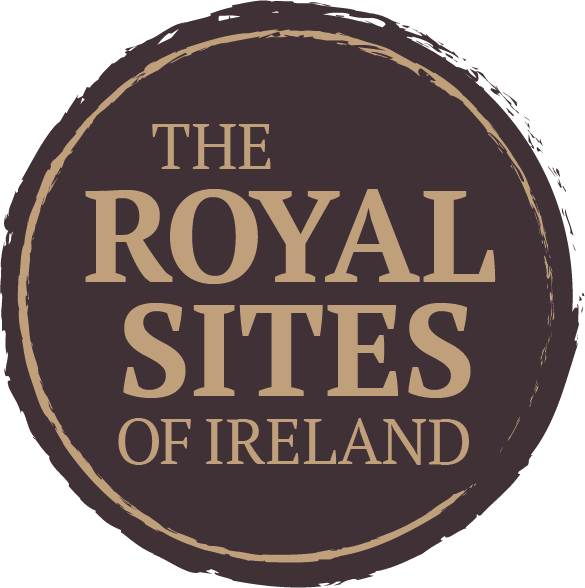 The Royal Sites of Ireland
The Royal Sites of Ireland
 Heritage Ireland - Rathcroghan
Heritage Ireland - Rathcroghan
 Heritage Ireland - Tara
Heritage Ireland - Tara
 Heritage Ireland - Cashel
Heritage Ireland - Cashel
 Discover Ireland - Cashel
Discover Ireland - Cashel
 Discover Ireland - Tara
Discover Ireland - Tara
 Discover Ireland - Uisneach
Discover Ireland - Uisneach
 Heritage Ireland - Rathcroghan
Heritage Ireland - Rathcroghan
 Visit Armagh - Navan Fort
Visit Armagh - Navan Fort
